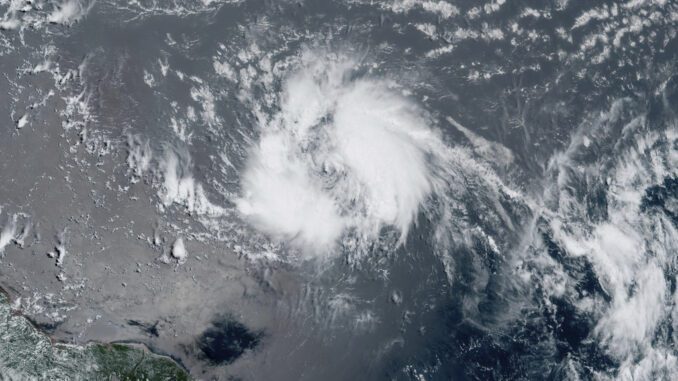
SAN JUAN, Puerto Rico — Tropical Storm Bret grew stronger on Wednesday as it took aim at islands in the eastern Caribbean that braced for torrential rainfall, landslides and flooding.
Bret had maximum sustained winds of 60 mph early Wednesday morning and was moving westward across the Atlantic Ocean at 15 mph, according to the National Hurricane Center in Miami.
The storm was located some 415 miles east of Barbados and is expected to grow stronger before lashing several eastern Caribbean islands late Thursday at near hurricane strength. A tropical storm watch was in effect for Barbados, Martinique and Dominica, as officials in the region urged people to prepare for Bret. A tropical storm warning was issued for St. Lucia.
“We all know the uncertainty with forecasting intensity, movement and impact of weather systems,” said Fitzroy Pascal at Dominica’s office of disaster management.
A special aircraft was investigating the storm on Wednesday to provide a better estimate of Bret’s intensity, according to the hurricane center. Officials said it was too soon to know where Bret’s center would pass through, but they warned that up to 10 inches of rain were forecast from the French Caribbean island of Guadeloupe south to Grenada and Barbados.
The government of Guadeloupe warned that inclement weather would start Thursday morning and continue until late Friday, with waves of up to 11 feet.
“Be careful!” officials warned in a statement.
Antigua-based regional airline LIAT said the storm would disrupt several of its flights scheduled for Thursday and Friday.
Bret is expected to weaken after it enters the eastern Caribbean Sea and is forecast to dissipate by Saturday.
The storm formed Monday — an unusually early and aggressive start to the Atlantic hurricane season that began on June 1. A tropical disturbance with an 80% chance of cyclone formation is trailing Bret. No June on record has had two storms form in the tropical Atlantic, according to meteorologist Philip Klotzbach at Colorado State University.
The National Oceanic and Atmospheric Administration has forecast 12 to 17 named storms for this year’s hurricane season. It said between five and nine of those storms could become hurricanes, including up to four major hurricanes of Category 3 or higher.
